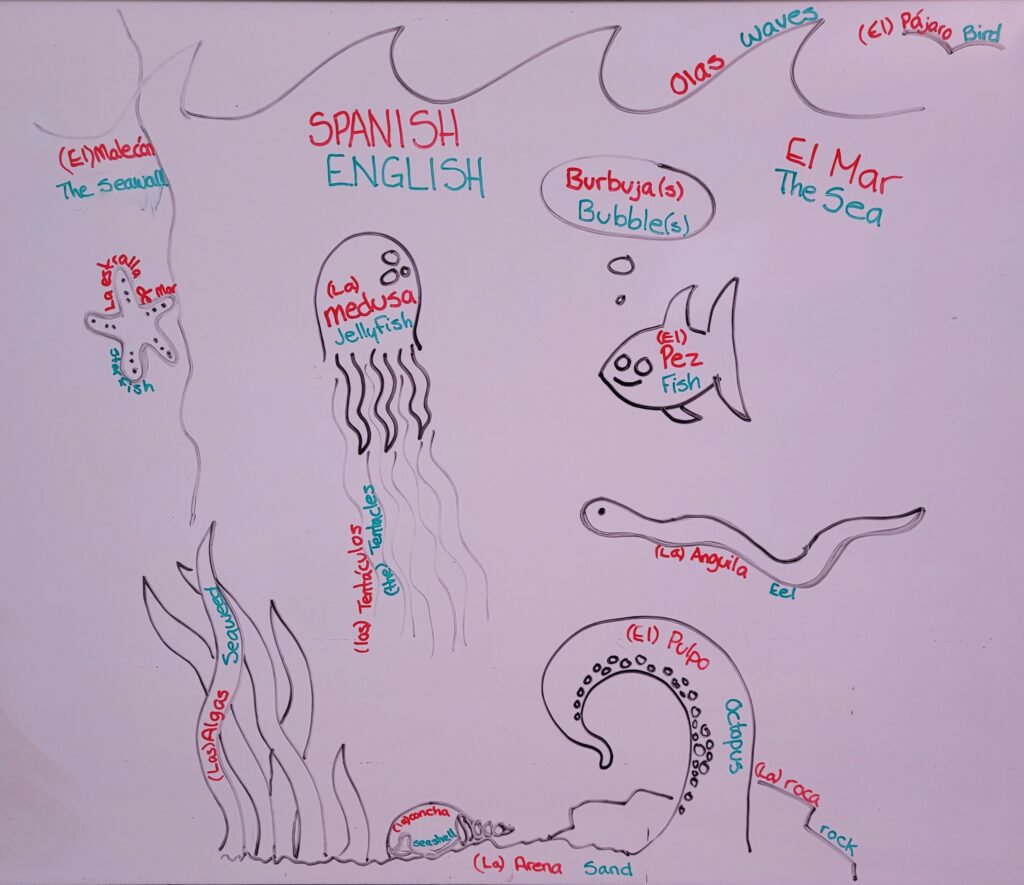Okay, so maybe not for degrees, but how about doodling for your education?

Pictured above is a sketch-note I created for learning Spanish words for an under the sear image! It contains the Spanish words for sea, waves, bird, bubbles, starfish, seawall, jellyfish, tentacles, seaweed, fish, eel, octopus, seashell, sand, and rock! All the doodles have the name of them in Spanish and English, so it could help in learning both languages.
The theory with sketch-noting is the idea that information can be better stored in memory through sketching -in real time- the content the student is learning. The process of sketch-noting is supported through research conducted at several universities.
Backed by Science!
Rachel S. Smith illuminates in the article, The Scientific Case For Doodling While Taking Notes, that writing while doodling is more effective for information retention than typed notes, which tend to be word-for-word from the instructor. Instead, learners taking notes must process and re-frame because “it isn’t possible to capture everything when writing longhand,” Smith points out that, “students tend to listen, digest, and summarize.”
The “science” behind what the researchers at Princeton University and the University of California found to support the argument in the article was the example of students studying for a test. The students who captured the notes on a computer notably had more content written down, while the students who took notes on paper had less. However, the tests showed that the students who wrote longhand did better on the tests because their conceptual understanding and recall had been previously re-framed into their own words and comprehension. This means that through the act of handwriting notes actually increases information retention and understanding the material.
So What About Doodling?
In the same article by Smith, a study conducted at the University of Waterloo made a case for the effectivity of creating simple doodles or drawings to aid in remembering words or characteristics related to the words. It was concluded that the quality of the drawing had no influence over information retention; the quick drawing or doodle was sufficient enough! This bodes well for us non-artists!

Achieving A’s through Art

Could sketch-noting benefit learners in grade 6? Certainly! I would especially like to incorporate sketch-noting into science and socials as process for information retention is so different from numeracy or literacy. I could create science-related test on wavelengths, for example, that is all pictures and the students have to describe what they are and what they do. That style of test could be really fun for the students. I could also go the other way where I provide a test of words with spaces and the students would draw what the word means or represents. I would assess which style of test was received better and potentially create more tests of the successful style.